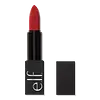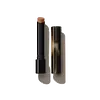What's inside
What's inside
 Key Ingredients
Key Ingredients

 Benefits
Benefits

 Concerns
Concerns

 Ingredients Side-by-side
Ingredients Side-by-side

Polyglyceryl-2 Triisostearate
EmulsifyingEthylhexyl Palmitate
EmollientBis-Diglyceryl Polyacyladipate-2
EmollientMica
Cosmetic ColorantSynthetic Wax
AbrasiveSilica
AbrasiveEuphorbia Cerifera Wax
Squalane
EmollientIsononyl Isononanoate
EmollientJojoba Esters
EmollientCaprylic/Capric Triglyceride
MaskingHydrogenated Polycyclopentadiene
Microcrystalline Wax
Emulsion StabilisingOryza Sativa Starch
AbsorbentHelianthus Annuus Seed Wax
Skin ConditioningSclerocarya Birrea Seed Oil
HumectantTocopheryl Acetate
AntioxidantParfum
MaskingPhenoxyethanol
PreservativeStearalkonium Hectorite
Gel FormingCaprylyl Glycol
EmollientAcacia Decurrens Flower Wax
EmollientPolyhydroxystearic Acid
EmulsifyingLecithin
EmollientPolyglycerin-3
HumectantPropylene Carbonate
SolventPolyglyceryl-3 Polyricinoleate
EmulsifyingIsostearic Acid
CleansingIsopropyl Myristate
EmollientTriethoxycaprylylsilane
CI 15850
Cosmetic ColorantCI 77491
Cosmetic ColorantCI 77492
Cosmetic ColorantCI 16035
Cosmetic ColorantCI 45410
Cosmetic ColorantCI 77891
Cosmetic ColorantCI 42090
Cosmetic ColorantPolyglyceryl-2 Triisostearate, Ethylhexyl Palmitate, Bis-Diglyceryl Polyacyladipate-2, Mica, Synthetic Wax, Silica, Euphorbia Cerifera Wax, Squalane, Isononyl Isononanoate, Jojoba Esters, Caprylic/Capric Triglyceride, Hydrogenated Polycyclopentadiene, Microcrystalline Wax, Oryza Sativa Starch, Helianthus Annuus Seed Wax, Sclerocarya Birrea Seed Oil, Tocopheryl Acetate, Parfum, Phenoxyethanol, Stearalkonium Hectorite, Caprylyl Glycol, Acacia Decurrens Flower Wax, Polyhydroxystearic Acid, Lecithin, Polyglycerin-3, Propylene Carbonate, Polyglyceryl-3 Polyricinoleate, Isostearic Acid, Isopropyl Myristate, Triethoxycaprylylsilane, CI 15850, CI 77491, CI 77492, CI 16035, CI 45410, CI 77891, CI 42090
Polyglyceryl-3 Diisostearate
EmulsifyingDiisostearyl Malate
EmollientBis-Diglyceryl Polyacyladipate-2
EmollientPentaerythrityl Tetraisostearate
EmollientCaprylic/Capric Triglyceride
MaskingSynthetic Wax
AbrasiveTriisostearin
Skin ConditioningPolybutene
Euphorbia Cerifera Wax
Helianthus Annuus Seed Wax
Skin ConditioningRosa Damascena Flower Wax
MaskingSimmondsia Chinensis Seed Oil
EmollientRosa Canina Fruit Oil
EmollientPunica Granatum Flower Extract
Skin ConditioningSilica
AbrasiveTocopheryl Acetate
AntioxidantPersea Gratissima Oil
Skin ConditioningCocos Nucifera Oil
MaskingDicalcium Phosphate
AbrasiveMica
Cosmetic ColorantTitanium Dioxide
Cosmetic ColorantIron Oxides
CI 19140
Cosmetic ColorantCI 15850
Cosmetic ColorantCI 42090
Cosmetic ColorantCI 47005
Cosmetic ColorantCI 15985
Cosmetic ColorantCI 45410
Cosmetic ColorantCI 77742
Cosmetic ColorantPolyglyceryl-3 Diisostearate, Diisostearyl Malate, Bis-Diglyceryl Polyacyladipate-2, Pentaerythrityl Tetraisostearate, Caprylic/Capric Triglyceride, Synthetic Wax, Triisostearin, Polybutene, Euphorbia Cerifera Wax, Helianthus Annuus Seed Wax, Rosa Damascena Flower Wax, Simmondsia Chinensis Seed Oil, Rosa Canina Fruit Oil, Punica Granatum Flower Extract, Silica, Tocopheryl Acetate, Persea Gratissima Oil, Cocos Nucifera Oil, Dicalcium Phosphate, Mica, Titanium Dioxide, Iron Oxides, CI 19140, CI 15850, CI 42090, CI 47005, CI 15985, CI 45410, CI 77742
Ingredients Explained
These ingredients are found in both products.
Ingredients higher up in an ingredient list are typically present in a larger amount.
This ingredient is lipid-based synthetic skin-conditioning agent derived from adipic acid and a mixture of fatty acids. It is often called a lanolin substitute.
As an emollient, it helps soften and hydrate the skin. Emollients create a barrier on the skin to trap moisture in.
Due to its fatty acid base, it may not be Malassezia folliculitis safe.
Learn more about Bis-Diglyceryl Polyacyladipate-2This ingredient is an emollient, solvent, and texture enhancer. It is considered a skin-softener by helping the skin prevent moisture loss.
It helps thicken a product's formula and makes it easier to spread by dissolving clumping compounds.
Caprylic Triglyceride is made by combining glycerin with coconut oil, forming a clear liquid.
While there is an assumption Caprylic Triglyceride can clog pores due to it being derived from coconut oil, there is no research supporting this.
Learn more about Caprylic/Capric TriglycerideCi 15850 is the pigment color red. It is an azo dye and created synthetically.
Azo dyes need to be thoroughly purified before use. This allows them to be more stable and longer-lasting.
This ingredient is common in foundations, lipsticks, and blushes. This color is described as brown/orangey red.
It has many secondary names such as Red 6 and Red 7. According to a manufacturer, Red 6 usually contains aluminum.
Learn more about CI 15850Ci 42090 is a synthetic dye created from petroleum. It is used to give a bright blue color to cosmetics, medicine, and food.
CI 45410 is a synthetic red-pigment and dye.
It often goes by both Red 28 or Red 27; manufacturers label both ingredients as CI 45410.
This dye is commonly found in makeup because it imparts a vivid color. Some types of this dye change color based on pH level and interaction with moisture:
Your skin has a natural pH of around 4.5 - 5.5.
According to the FDA, CI 45410 is not permitted for use in eye products.
Red 27 is a flourescein dye and commonly used as a fluorescent tracer in medicine.
Learn more about CI 45410Helianthus Annuus Seed Wax is created from the common sunflower.
Sunflower seed wax is made up of long chain non-glyceride esters, a small amount of fatty alcohols, and fatty acids.
This ingredient is often used to enhance the texture of products. The fatty acid properties also help hydrate the skin.
Learn more about Helianthus Annuus Seed WaxMica is a naturally occurring mineral used to add shimmer and color in cosmetics. It can also help improve the texture of a product or give it an opaque, white/silver color.
Serecite is the name for very fine but ragged grains of mica.
This ingredient is often coated with metal oxides like titanium dioxide. Trace amounts of heavy metals may be found in mica, but these metals are not harmful in our personal products.
Mica has been used since prehistoric times throughout the world. Ancient Egyptian, Indian, Greek, Roman, Aztec, and Chinese civilizations have used mica.
Learn more about MicaSilica, also known as silicon dioxide, is a naturally occurring mineral. It is used as a fine, spherical, and porous powder in cosmetics.
Though it has exfoliant properties, the function of silica varies depending on the product.
The unique structure of silica enhances the spreadability and adds smoothness, making it a great texture enhancer.
It is also used as an active carrier, emulsifier, and mattifier due to its ability to absorb excess oil.
In some products, tiny microneedles called spicules are made from silica or hydrolyzed sponge. When you rub them in, they lightly polish away dead skin layers and enhance the penetration of active ingredients.
Learn more about SilicaSynthetic Wax is created from fossil fuels such as natural gas. It is used to enhance texture, adjust pH, and as an occlusive.
It may also be used as an abrasive ingredient to exfoliate the skin.
Synthetic Wax may not be fungal acne safe.
Learn more about Synthetic WaxTocopheryl Acetate is AKA Vitamin E. It is an antioxidant and protects your skin from free radicals. Free radicals damage the skin by breaking down collagen.
One study found using Tocopheryl Acetate with Vitamin C decreased the number of sunburned cells.
Tocopheryl Acetate is commonly found in both skincare and dietary supplements.
Learn more about Tocopheryl AcetateEuphorbia Cerifera wax comes from a shrub in Northern Mexico. It is used to stabilize formulations and has emollient properties.
Emollients form a thin layer on top of skin to prevent water from evaporating, keeping skin and lips hydrated.
According to a manufacturer, this wax can range from a yellow/brown color to translucent.
Learn more about Euphorbia Cerifera Wax